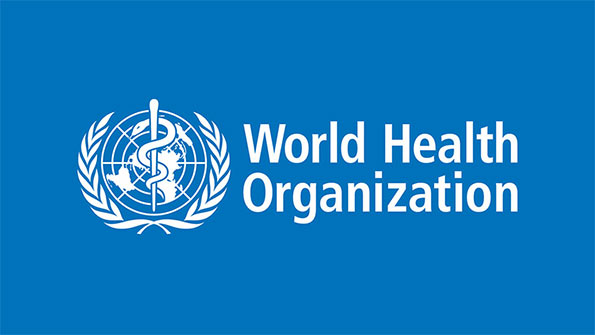Pesticide regulation in Sri Lanka led to 70% fall in suicides – WHO

The World Health Organization (WHO) says Sri Lanka is the best-studied country to prove that regulations to prohibit the use of highly hazardous pesticides can lead to reductions in national suicide rates.
A WHO publication issued yesterday (09), for the World Suicide Prevention Day on 10 September, read that a series of such bans in Sri Lanka has led to a 70% fall in suicides and an estimated 93 000 lives saved between 1995 and 2015.
The intervention that has the most imminent potential to bring down the number of suicides is restricting access to pesticides that are used for self-poisoning, the WHO pointed out.
“The high toxicity of many pesticides means that such suicide attempts often lead to death, particularly in situations where there is no antidote or where there are no medical facilities nearby,” the release read further.
Despite the increase in the number of countries with national suicide prevention strategies in the five years since the publication of WHO’s first global report on suicide, the one person dies every 40 seconds from suicide, the WHO said.
The most common methods of suicide are hanging, pesticide self-poisoning, and firearms, the release emphasized.
The complete publication issued by the WHO is as follows:
Progress in suicide prevention activities in some countries, but much more is needed
The number of countries with national suicide prevention strategies has increased in the five years since the publication of WHO’s first global report on suicide, said the World Health Organization in the lead-up to World Suicide Prevention Day on 10 September. But the total number of countries with strategies, at just 38, is still far too few and governments need to commit to establishing them.
“Despite progress, one person still dies every 40 seconds from suicide,” said WHO Director-General, Dr Tedros Adhanom Ghebreyesus. “Every death is a tragedy for family, friends and colleagues. Yet suicides are preventable. We call on all countries to incorporate proven suicide prevention strategies into national health and education programmes in a sustainable way.”
Suicide rate highest in high-income countries; the second leading cause of death among young people
The global age-standardized suicide rate [1] for 2016 [2] was 10.5 per 100 000. Rates varied widely, however, between countries, from 5 suicide deaths per 100 000, to more than 30 per 100 000. While 79% of the world’s suicides occurred in low- and middle-income countries, high-income countries had the highest rate, at 11.5 per 100 000. Nearly three times as many men as women die by suicide in high-income countries, in contrast to low- and middle-income countries, where the rate is more equal.
Suicide was the second leading cause of death among young people aged 15-29 years, after road injury. Among teenagers aged 15-19 years, suicide was the second leading cause of death among girls (after maternal conditions) and the third leading cause of death in boys (after road injury and interpersonal violence).
The most common methods of suicide are hanging, pesticide self-poisoning, and firearms. Key interventions that have shown success in reducing suicides are restricting access to means; educating the media on responsible reporting of suicide; implementing programmes among young people to build life skills that enable them to cope with life stresses; and early identification, management and follow-up of people at risk of suicide.
Pesticide regulation: an under-used but highly effective strategy
The intervention that has the most imminent potential to bring down the number of suicides is restricting access to pesticides that are used for self-poisoning. The high toxicity of many pesticides means that such suicide attempts often lead to death, particularly in situations where there is no antidote or where there are no medical facilities nearby.
As indicated in the WHO publication released today, Preventing suicide: a resource for pesticide registrars and regulators, there is now a growing body of international evidence indicating that regulations to prohibit the use of highly hazardous pesticides can lead to reductions in national suicide rates. The best-studied country is Sri Lanka, where a series of bans led to a 70% fall in suicides and an estimated 93 000 lives saved between 1995 and 2015. In the Republic of Korea – where the herbicide paraquat accounted for the majority of pesticide suicide deaths in the 2000s – a ban on paraquat in 2011-2012 was followed by a halving of suicide deaths from pesticide poisoning between 2011 and 2013.
Data quality needs to improve
The timely registration and regular monitoring of suicide at the national level are the foundation of effective national suicide prevention strategies. Yet, only 80 of the 183 WHO Member States for which estimates were produced in 2016 had good-quality vital registration data. Most of the countries without such data were low- and middle-income. Better surveillance will enable more effective suicide prevention strategies and more accurate reporting of progress towards global goals.
Note:
On 10 September, WHO, in collaboration with global partners, the World Federation for Mental Health, the International Association for Suicide Prevention and United for Global Mental Health, is launching the 40 seconds of action campaign. The culmination of the campaign will be on World Mental Health Day, 10 October, the focus of which is also suicide prevention this year.
(Source: Ada Derana)
Latest Headlines in Sri Lanka
- Sri Lanka President holds urgent meeting on damaged roads in Nuwara Eliya December 8, 2025
- Government warns public against relief donation fraud December 8, 2025
- Businesses fined for selling water, rice at inflated prices December 8, 2025
- Special bus services for train passengers begin today December 8, 2025
- Sri Lanka President vows to tighten laws against unauthorized constructions December 8, 2025


